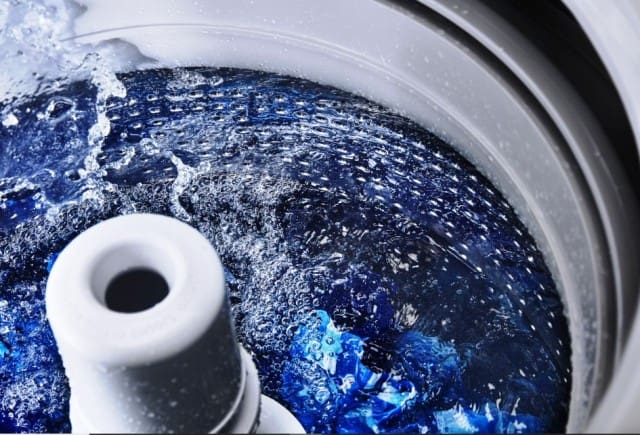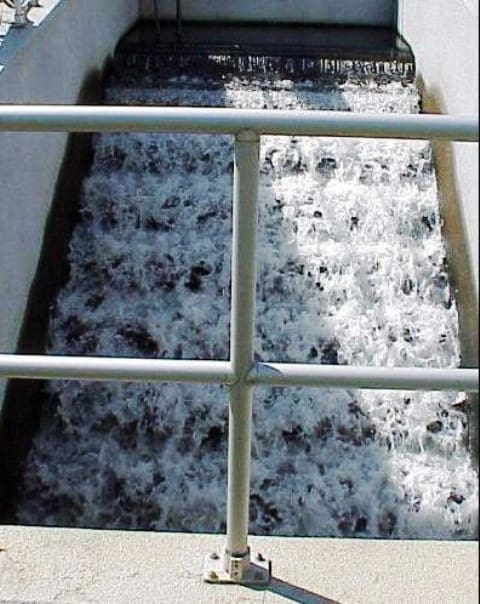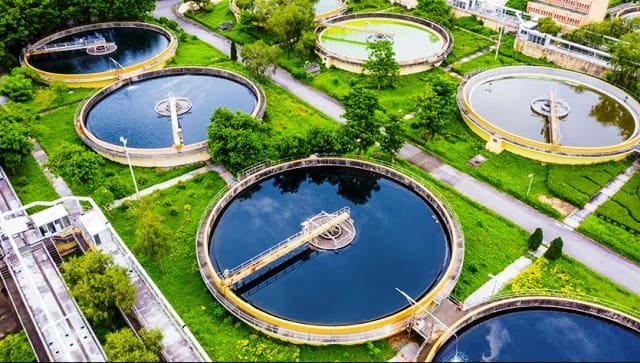
What is gray water and what is green water? As you’ve probably guessed, there are significant differences between the two types of water. Although both are recycled water, their purposes and the processes they undergo differ. How do companies collect water and use gray or green water in their operations? Here’s what you need to know:
What is Grey Water?
Greywater refers to the wastewater generated in households or commercial buildings that comes from non-toilet fixtures. This includes water from sources such as washing machines, showers, bathtubs, bathroom sinks, and laundry sinks. Greywater does not include water that has come into contact with toilet waste (often referred to as blackwater) or water from the kitchen sink, which may contain fats, oils, and food particles.

What Are the Sources of Grey Water?
Washbasin: Gray water can collect in bathroom sinks and is usually produced when washing hands and teeth.
Shower/bathtub: Water from showers and bathtubs can be collected as gray water. This water often contains soap residue but is suitable for some non-potable purposes.
Laundry: Washing machine water, commonly called laundry water, is a significant source of gray water.
Kitchen sink: Gray water from the kitchen sink may contain food particles and grease, but can still be cleaned and reused for specific purposes.
Dishwasher: Dishwashing water that contains soap and food residue can also be considered gray water.
Gray water purification systems: Some homes or buildings have gray water treatment systems that collect gray water and treat it for reuse. These systems can include filtration and disinfection processes to make the water suitable for specific purposes.
Commercial and Industrial Sources: In commercial and industrial environments, gray water can be generated by processes such as cooling systems, manufacturing, and other activities. Sometimes this gray water can be treated and reused within the facility.

What are the Features of Grey Water?
Gray water is wastewater generated from household activities that do not produce human waste, such as bathing, washing dishes, and doing laundry. Unlike black water, which contains feces and is typically associated with toilets, gray water is relatively clean and can be recycled for non-potable purposes. Here are the main characteristics of gray water, explained:
Source: Grey water comes from household activities such as bathing, showering, washing hands, washing dishes and doing laundry.Excludes toilet water, which is considered black water due to its contamination with human feces.
Composition: Gray water contains fewer pollutants than black water. May contain traces of soap, shampoo, detergents and food particles.Does not contain significant amounts of pathogens and is therefore suitable for certain types of reuse.
Color and scent: Gray water is typically gray or slightly dirty in color, reflecting its purity compared to black water.Its odor is generally milder than that of sewage, mainly due to the absence of human excrement.
Healing Requirements: Gray water requires less purification than black water. Often simple filtering and disinfection procedures are enough to make it suitable for reuse.Treatment methods may include sedimentation, filtration, and chemical disinfection to remove contaminants and pathogens.
Ways to reuse: Gray water can be reused for a variety of non-potable purposes, reducing the need for fresh water sources. Typical applications include irrigation, toilet flushing and landscape irrigation.Depending on local regulations and manufacturing methods, some systems may be able to be used indoors, for example for flushing toilets or washing clothes.
Nutrient Content: Gray water contains some nutrients, mainly from soaps and detergents.While these nutrients can be beneficial to plants, overuse without proper management can lead to soil and plant health problems.

What is the Purpose of Grey Water?
Gray water is relatively clean wastewater that results from activities such as dishwashing, laundry and bathing. Unlike black water, which comes from toilets and contains feces, gray water is considered less polluted and can be reused for various non-potable purposes. The purpose of gray water is diverse and promotes both ecological sustainability and resource conservation. Here are the key points to explain the purpose of gray water:
Water protection: Gray water reuse reduces the need for fresh drinking water, contributing to overall water conservation efforts.As water scarcity becomes a global issue, gray water reuse helps reduce pressure on water supplies and promotes a more sustainable water use cycle.
Landscape irrigation: One of the main functions of gray water is to irrigate gardens, lawns and plants.Gray water contains nutrients that can benefit vegetation without the need for chemical fertilizers.By providing gray water for outdoor irrigation, families can maintain attractive landscapes while conserving fresh water for vital purposes.
Reduced load on sewer networks: Using gray wastewater for non-potable purposes reduces the amount of wastewater entering the municipal sewer system.This reduction in wastewater flow helps reduce the load on wastewater treatment plants and infrastructure and potentially extends the life of existing systems.
Energy Saving: Treating and pumping water for distribution requires significant energy expenditure.Local gray water reuse reduces energy-intensive processes associated with centralized water treatment and distribution.Reducing energy consumption in water-related activities contributes to a more sustainable and environmentally friendly approach to resource management.
Cost savings: Gray water reuse can result in savings for individuals and communities by reducing water bills and wastewater treatment costs.Installing gray water systems can incur upfront costs, but long-term savings can make these systems economically viable over time.
Education and Awareness: The use of gray water raises public awareness of water conservation and the importance of responsible water management.Graywater’s educational initiatives demonstrate the potential for individuals to have a positive impact on the environment by adopting more sustainable water use practices.
Compliance: In some regions, gray water reuse is promoted or regulated as part of water conservation and sustainability initiatives.By complying with these regulations, communities contribute to broader environmental goals and demonstrate their commitment to responsible water use.
In summary, the benefits of gray water go far beyond just being a byproduct of waste. It is a valuable resource that, if managed carefully, can make a significant contribution to environmental sustainability, water conservation and the overall resilience of water systems.Incorporating gray water reuse is part of a broader movement toward more responsible and efficient use of water resources in the face of growing environmental challenges.
What is Green Water?
The green water is water that is treated to remove impurities. It also has a variety of uses, but may be suitable for more demanding environments that require a higher level of cleanliness.

How Does Green Water Undergo Treatment?
Green water, also called rainwater or rainwater, is treated to remove various pollutants before being released into the environment or used for other purposes. The treatment process includes several stages in which the water meets environmental standards and is safe for various purposes. Here is the explanation:
Collection: Green water purification begins with collecting rainwater or rainwater from various surfaces such as roofs, roads and other impermeable areas collection systems include gutters, downspouts and sewers designed to transport water to wastewater treatment plants.
Screening: Large contaminants such as leaves, twigs and dirt are removed from the collected water using filter mechanisms. This prevents clogging of subsequent processing equipment.
Settling: Water can stagnate in ponds or settling tanks, encouraging the deposition of heavier particles such as sand and sediment.The deposited substances are removed, which reduces the overall sediment load in the waters.
Filtration: To remove finer solid particles from the water, filtration processes such as sand or gravel filters are used.These filters capture suspended particles and improve the clarity of the water.
Biological treatment: Green water often contains organic pollutants.Biological treatment methods use microorganisms to break down organic material into simpler, less harmful substances.Artificial wetlands or biofiltration systems can be used to promote the growth of beneficial bacteria that help break down pollutants naturally.
Chemical treatment: Chemical coagulants and flocculants can be added to water to compact fine particles and facilitate their removal. Adjustment of pH may also be necessary to optimize the effectiveness of subsequent treatment levels.
Disinfection: Disinfection methods such as chlorination or UV treatment are used to eliminate harmful bacteria and pathogens.This step ensures that the treated water can be safely released into the environment or used in non-potable applications.
Storage: Purified green water may be stored in tanks or cisterns before its release or final use. This storage allows for quality control and ensures a constant supply for irrigation or other non-potable uses.
Release or reuse: In the final phase, the treated water is discharged into natural water bodies or diverted for non-potable purposes such as irrigation, industrial processes or groundwater recharge.
Monitoring and Compliance: Water quality is monitored throughout the treatment process to ensure compliance with environmental regulations and standards.Through continuous evaluation, treatment parameters can be adjusted to maintain optimal effectiveness.Through these purification processes, green water can be effectively cleaned of contaminants, contributing to sustainable water management practices and minimizing the environmental impact of urban runoff.
What are the Characteristics of Green Water?
Origin: Green water is created by atmospheric precipitation, including rain and snow. It seeps into the ground and becomes part of the soil moisture.
Storage: Green water is stored in the root zone of the soil where plant roots can access it to grow. It usually occurs in the upper layers of the soil profile.
Use by plants: Plants absorb green water through their roots through various physiological processes such as photosynthesis, transpiration and nutrient absorption.
Role in perspiration: Transpiration is the process by which water moves from plant roots to leaves and is released into the atmosphere. Green water is an important part of this process.
Water cycle: Green water plays a key role in the water cycle and influences processes such as precipitation, runoff and groundwater recharge.
Soil moisture: The presence and amount of green water affects soil moisture. Adequate soil moisture is important to support plant growth and maintain healthy ecosystems.
Effects on ecosystems: The availability of green water influences the types of vegetation and ecosystems that can develop in a given region. It is a key factor for biodiversity and ecological balance.
Climate Ordinance: Through processes such as evapotranspiration, green water helps regulate local and regional climates and influences factors such as humidity and precipitation.
Criticism of agriculture: In agriculture, green water is necessary for agricultural production. Sufficient soil moisture content is required for plant germination, growth and yield.
Soil Health: Green water contributes to soil health by supporting microbial activity and nutrient cycling in the soil.
Drought Resistance: Green water is essential for strengthening drought resistance. Ecosystems and agricultural systems with sufficient green water are better able to withstand periods of water scarcity.
Understanding the properties of green water is important for sustainable water management practices, agricultural planning, and ecosystem conservation efforts. Emphasizes the interdependence between water, soil and vegetation in maintaining a healthy environment.

What is the Importance of Green Water?
Supports Plant Growth:Green water is necessary for plant growth. It is absorbed by plant roots and used in various physiological processes, including photosynthesis and nutrient absorption.
Agricultural productivity: In agriculture, green water is necessary for agricultural production. It directly affects the yield and quality of the crop by providing the necessary moisture for germination, growth and development.
Ecosystem status: Green water plays a key role in maintaining the health and functionality of ecosystems.It is home to a variety of plant species, which in turn are home to a variety of animal species.
Promoting biodiversity: Sufficient availability of green water contributes to the creation of diverse habitats and promotes biodiversity. Different plant species adapted to different humidity levels create ecological niches for different organisms.
Regulation of the water cycle: Green water is an integral part of the water cycle and influences processes such as evapotranspiration, precipitation and groundwater recharge. It helps regulate water movement in the area.
Soil Health and Fertility: Green water is essential for maintaining soil health. Supports microbial activity in the soil, contributing to nutrient cycling and overall soil fertility.
Climate Ordinance: Through processes such as evapotranspiration, green water helps regulate local and regional climates. This influences factors such as humidity, cloud formation and precipitation patterns.
Water balance: Green water is part of the overall water balance of ecosystems.Helps prevent soil erosion and desertification by maintaining optimal soil moisture levels.
Climate Change Resilience: Ecosystems with sufficient green water are more resilient to climate change. They are better able to adapt to changing rainfall patterns and temperatures.
Food Safety: Green water is fundamental to food security as it directly impacts agricultural productivity. To ensure consistent and reliable agricultural yields, sufficient soil moisture is essential.
Sustainable resource management: Recognizing the importance of green water is essential for sustainable water management. It highlights the need to conserve soil moisture for long-term ecosystem health and human well-being.
Alleviating the Effects of Drought: Green water is a key factor in limiting the effects of drought. Ecosystems and agricultural systems with sufficient green water are better equipped to withstand periods of water scarcity.
